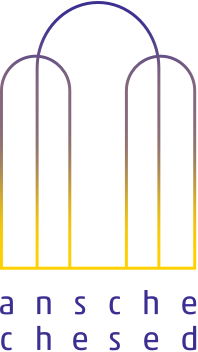The Amidah’s second blessing is about divine might in resurrecting the dead. We typically understand this as a maximally mythic miracle for a redemptive future, when God will vivify deceased people who “sleep in the dust.” Well, maybe there is RESURRECTION, shouting with all-caps in bold face, and “resurrection,” whispered in small letters.
The Hebrew word for resurrection, תחיה/ tehiya literally means “bringing to life.” Perhaps the deceased are not the only ones who need a little life renewal. When the Amidah speaks of God as somekh noflim, “supporting the fallen,”rofeh holim, “healing the sick” and matir assurim, “releasing the captives,” it portrays these paradigms of suffering people not as the dead, but as the dying.
Imagine how pre-modern davveners might relate to the tough conditions described in our prayer. If you were sick or broken, you likely didn’t recover. (No hip replacements. No anti-biotics. No angioplasty. No chemo.) If you were imprisoned – perhaps because of debts no honest man could pay, or because you were kidnapped by tyrants – you might well die in the pit.
When our bodies, our hearts or our circumstances trap us in pain, how do we endure a little longer?
One way to think about God is as the tender encouraging presence vivifying us in our suffering. This motif is found especially in the writings of the prophet whom the Talmudic sages called “Deutero-Isaiah.” (Just kidding. They called him regular “Isaiah.” But since the writer of the second half of that book clearly lived 200 years after the writer of the first half, we moderns refer to this as the “Second Isaiah.”) That writer’s go-to maneuver is to portray the lofty and transcendent Divine as intimate with the humble and lowly. All too often, human might is the power to subdue others, to control them, to make them small, to put them down. But the King of King of Kings is unlike the ruler of flesh and blood. The grandeur of God is to raise the small until they can stand with dignity. Powerful people bend others to their will. The mighty God is zokef kefufim/ “straightens up those who are bent over [Psalms 146.8].”
Here is a perfect illustration, which will illuminate this blessing and help us davven it with a full heart [Isaiah 57:15, incidentally, the Haftara for Yom Kippur]:
“Thus says the high and lofty, who dwells eternally, whose name is Holy: “I dwell in the lofty and transcendent sacred. But also with crushed and
humble spirits, to revive the spirit of the humble and revive the hearts of the crushed.”
That term revive is להחיות/le’ha’h‘yot, the very verb the Amidah uses for resurrection. Here it describes not an eschatological miracle but the small wonder of daily sustaining encouragement amidst pain.
Isaiah gives us soaring poetry that can open our hearts to receive this divine renewal. Perhaps you’ll want to tuck some of his verses into your prayer book and let them help you davven the resurrection blessing with intensity. When you pray it, go slow. Take a moment and linger over the ways you may feel imprisoned or crushed. What chains your body? What darkens your vision? Then hear Isaiah’s prophecy [42:6-7]:
“I the Lord have called you. I hold your hand. I create you and appoint you a covenant people, a light of nations, opening the eyes of the blind, rescuing prisoners from the jail and those who sit in darkness from the dungeon.”





